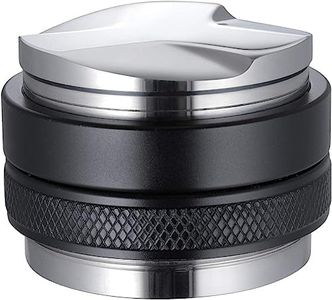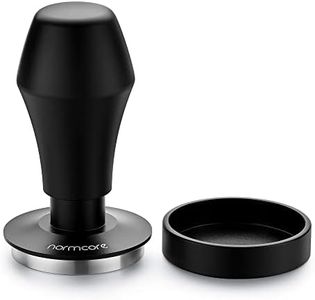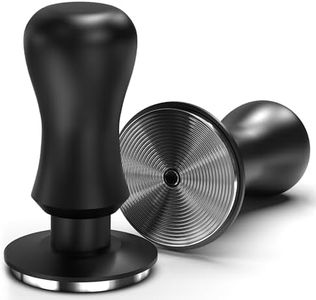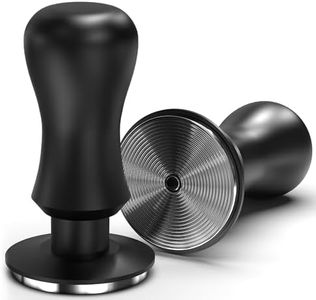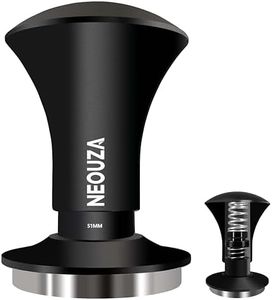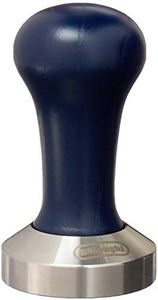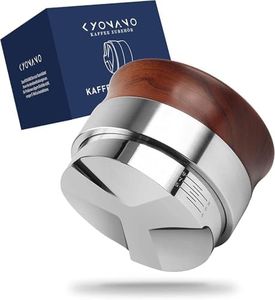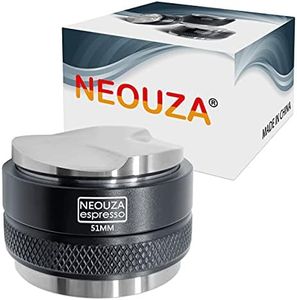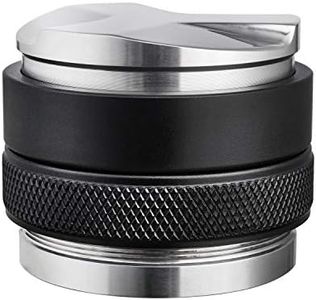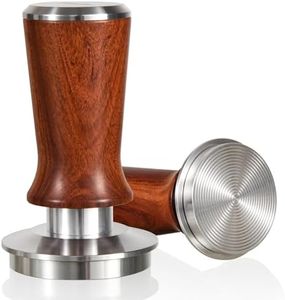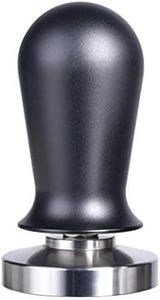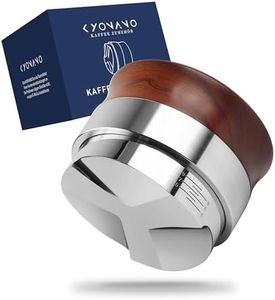We Use CookiesWe use cookies to enhance the security, performance,
functionality and for analytical and promotional activities. By continuing to browse this site you
are agreeing to our privacy policy
10 Best Espresso Tampers
From leading brands and best sellers available on the web.By clicking on a link to a third party's website, log data is shared with that third party.
Buying Guide for the Best Espresso Tampers
Choosing the right espresso tamper is essential for making good espresso at home or in a café. The tamper is what you use to press down the ground coffee in your portafilter before brewing. A well-chosen tamper helps you achieve an even, consistent tamp, which in turn results in better extraction and great-tasting espresso. When shopping for a tamper, it's important to focus on several key aspects to make sure it fits both your espresso machine and your personal technique.DiameterThe diameter of a tamper refers to the width of the base that presses down on the coffee grounds. The size needs to match the diameter of your portafilter basket for effective tamping and to avoid gaps at the edges, which can cause uneven extraction. The most common sizes are around 49mm, 53mm, and 58mm. Check what size basket your portafilter has; choosing a tamper that fits snugly (with almost no wiggle room) helps ensure that all the coffee is tamped evenly.
WeightThe weight of a tamper affects how much force you need to apply when tamping. Heavier tampers often make it easier to achieve consistent pressure without much effort, which is helpful for beginners. Lighter tampers require you to be more deliberate with your tamping pressure. Think about your own strength and comfort: if you prefer a tool that does some of the work for you, a heavier tamper may be preferable, but if you like more control, you might choose a lighter model.
Shape of BaseTampers usually have either a flat or convex (slightly rounded) base. Flat bases press the coffee evenly and are the most common. Convex bases are thought by some to slightly improve extraction by promoting even water flow, especially in deeper baskets, but the difference is subtle. For most users, starting with a flat base is a safe and effective choice. If you're an experienced barista wanting to experiment with extraction, you might consider a convex base.
Handle ErgonomicsThe handle is the part you'll be holding and pressing down on, so its shape, thickness, and material are all important for comfort and control. Some handles are tall and slim, others short and wide, and materials can vary from wood to metal to plastic. The ideal choice depends on your hand size and how the tamper feels in your grip. Try holding a few different styles if possible to see which fits best; a comfortable handle reduces strain and helps you tamp evenly.
MaterialTampers are usually made from stainless steel, aluminum, wood, or plastic. Stainless steel is common for the base because it's durable and easy to clean. Handles may be made from metal, wood, or plastic, affecting the overall look and feel. Metal handles tend to be heavier and feel more solid, while wood provides a warmer touch and a classic appearance. Consider what feels better in your hand and how easy the tamper will be to clean and maintain based on its material.
